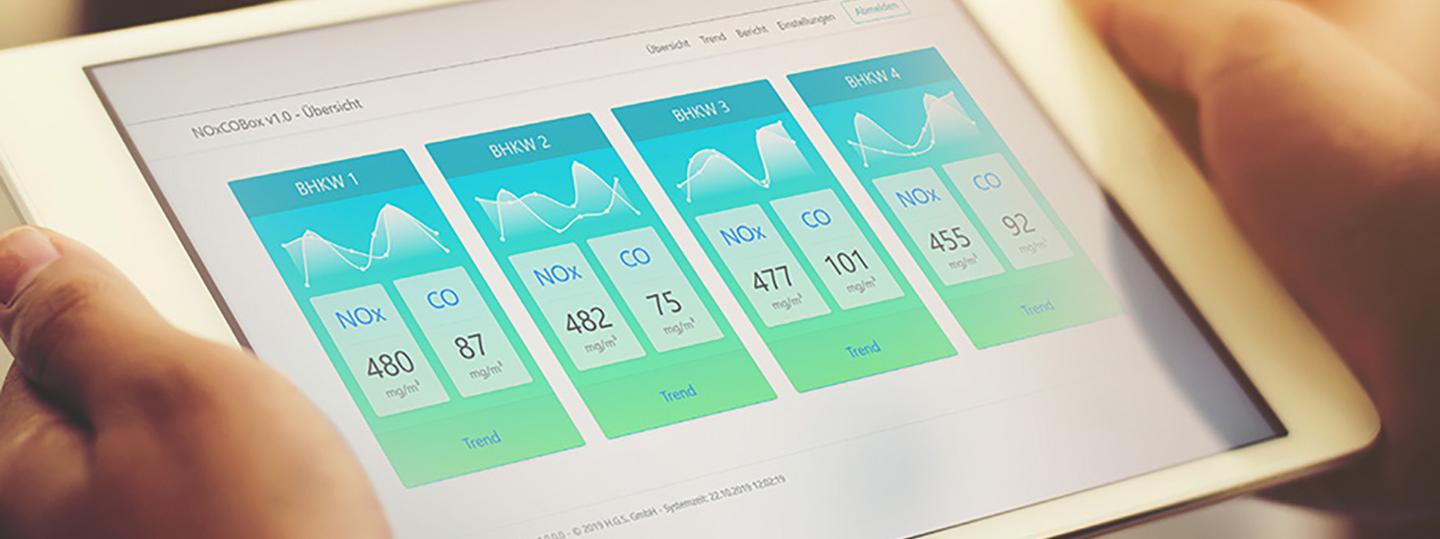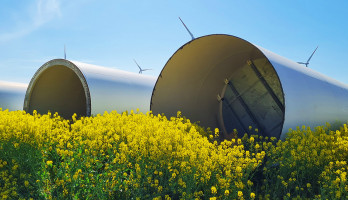
The 44. BImSchV Ordinance: More stringent requirements and obligations for plant operators to reduce emissions
Reducing harmful emissions is a key success factor in achieving greater sustainability in the energy sector and better protection of the environment. The 44 Federal Immission Control Ordinance (BlmSchV) for medium-sized combustion plants, gas turbines and internal combustion engines, which comes into force in summer 2019, is also aimed in this direction. In total, around 40,000 plants in Germany are subject to stricter operating requirements and numerous new obligations for their operators. In our article we give an overview of the most important regulations of the 44 BlmSchV and present the NOxCO-Box as a practical technical solution that supports plant operators in implementing the regulation.
Comprehensive new regulations – previous TA Luft merges into the 44 BImSchV
The 44 Federal Immission Control Ordinance is the national implementation of the European directive "Medium Combustion Plant Directive" (MCP Directive) of November 25, 2015. With the current regulations, the legislature pursues the goal of reducing harmful environmental effects through the emission of
- nitrogen oxides,
- carbon monoxide,
- sulfur dioxide,
- ammonia;
- particulate matter and
- formaldehyde significantly.
The 44 previously regulated in the Ordinance on Small and Medium-Sized Combustion Plants (1 BImSchV) and the Technical Instructions on Air Quality Control (TA Luft) and tightens them, in some cases considerably.
For which plants does the 44 BImSchV apply?
The 44 BImSchV is specifically designed for all operators of combustion, gas turbine and combustion engine systems with a combustion output of 1 to 50 megawatts, regardless of the type of fuel used. In addition, the Ordinance also applies to smaller plants with a capacity of less than 1 megawatt, provided that they are subject to approval under the Federal Immissions Control Act. According to § 1 para. 2 BImSchV 44, large combustion plants according to the 13 Federal Immission Control Ordinance, smelting and blast furnaces, afterburning plants or reactors in the chemical industry, are not covered by the regulation.
Important distinction between new and existing plants
Of great importance for the operators is also the aspect whether their plant after the 44 BImSchV is classified as a new or existing installation. This distinction is relevant in that it influences the registration deadlines and the date from which emission limit values may no longer be exceeded. For the purposes of this Regulation, "existing plants" means combustion plants which:
- entered into service before December 20, 2018; or
- were approved before December 19, 2017 in accordance with § 4 or § 16 of the Federal Immissions Act and were put into operation at the latest on December 20, 2018.
For example, new installations are subject to immediate notification to the pollution control authorities. For existing combustion, gas turbine and combustion engine systems, however, the legislator provides for a binding notification by December 1, 2023 at the latest.
44 BImSchV: New limit values for the emission of pollutants
The definition of emission limits takes up a lot of space in the new regulation. The specific limit values depend on the type of system, the fuel used and the furnace thermal capacity. With regard to the objectives of the 44 BImSchV, stricter requirements apply to some of the limit values than in the regulations of the 1 BImSchV or of the TA Luft 2002. The changes in the range of internal combustion engines (lean-burn engines) are particularly clear. Here, for example, the limit value for nitrogen dioxide to be achieved drops from 500 mg/Nm3 to 100 mg/Nm3. When the set emission limit values must be reached also depends on the
- type of system,
- the fuel used; and
- on the combustion output and
- the definition as a new or existing facility.
The regulation provides for transitional periods of four to five years for new installations and up to ten years for existing installations.
Measurement, monitoring, documentation: Many new obligations for system users
In addition to new and partially tightened emission limit values, the 44 BImSchV introduces numerous new obligations for system operators, such as emission monitoring, documentation or proof, which go beyond the previous regulations. Key changes include:
- For operators, the 44 BImSchV imposes comprehensive recording and storage obligations (for six years), e.g. for the technical configuration of the plant, the operating hours, malfunctions and failures, or the measures taken to remedy malfunctions.
- § 7 of 44 Federal Immission Control Ordinance also prescribes the keeping of an operating log for the documentation of emission-relevant data. This operating log, which documents compliance with the limit values as well as evidence of the continuous effective operation of the exhaust gas purification system, shall be submitted to the competent supervisory authority upon request.
- A notification period of one month applies to the authorities for a change of operator, decommissioning or emission-relevant changes to the installation.
- Detailed requirements for measuring and monitoring the system: Operators are required to demonstrate compliance with the emission limit values by continuous, annual or triennial measurements. Paragraphs 21 to 26 of the 44 BImSchV specifies in which form and how often these measurements must be carried out, depending on the type of plant and fuel as well as the power output. For example, according to Section 24(7) of the Ordinance, the obligation to install a NOx sensor applies for the determination and storage of daily average values in order to be able to continuously document compliance with the limit values during the year.
Complex regulations cause uncertainty for operators and authorities
Although the new regulation has been in force for more than a year, its implementation is still facing difficulties, according to Michael Siemer, Head of Sales at H.G.S. GmbH, a company of ENGIE Deutschland: "In our daily customer contact, we find time and again that there is a great deal of uncertainty with regard to the specific BImSchV requirements, both with plant operators and with state and regional authorities." Especially with regard to the complex requirements and extensive exceptions, many experts expect a rather lengthy changeover process: Starting with the question whether the respective plant even falls under the 44 BImSchV, to the translation of the new technical and documentary obligations into precise requirement specifications and the appropriate training of employees.
NOxCO box: Practical technical assistance in the implementation of the 44 BImSchV
In particular, with a view to the continuous monitoring of emission limit values, future-oriented technical solutions can provide valuable support in the implementation of the regulation. With the innovative NOxCO-Box, for example, the experts from H.G.S., together with partner companies from energy and automation technology, have developed an online-based system measuring system that enables emission monitoring at the second cycle.
"The NOxCO box meets exactly the requirements that the BImSchV places on system operators," says Michael Siemer. "In doing so, it not only ensures the continuous monitoring of an engine or an installation. Rather, it enables the online measurement of nitrogen oxide of up to four units simultaneously. Operators can thus significantly simplify their processes," says Siemer.
For this purpose, the NOxCO-Box records the system output, the emission values for nitrogen oxide and carbon monoxide as well as the residual oxygen content and converts the online values determined in the second cycle to half-hour and daily average values in accordance with the BImSchV. The output of the data stored on the box takes place either via a USB interface or via a hotspot generated by the box with the device via a smartphone. The data read out are stored in accordance with the documentation and storage obligations of the 44 BImSchV for a period of at least six years.
Since the beginning of the year, H.G.S. has already installed 50 boxes throughout Germany, including for municipal utilities and municipal utilities, and is currently putting 50 more systems into operation at various customers.







